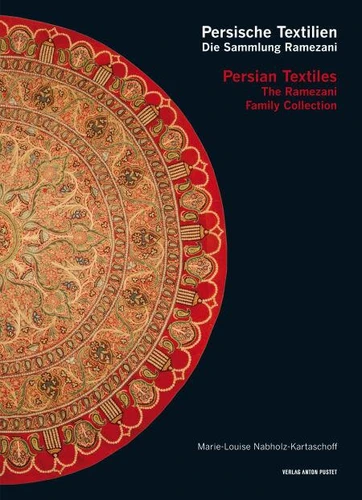Persische Textilien. Die Sammlung Ramezani. Persian Textiles. The Ramezani Family Collection
Par :Formats :
Disponible dans votre compte client Decitre ou Furet du Nord dès validation de votre commande. Le format ePub est :
- Compatible avec une lecture sur My Vivlio (smartphone, tablette, ordinateur)
- Compatible avec une lecture sur liseuses Vivlio
- Pour les liseuses autres que Vivlio, vous devez utiliser le logiciel Adobe Digital Edition. Non compatible avec la lecture sur les liseuses Kindle, Remarkable et Sony
 , qui est-ce ?
, qui est-ce ?Notre partenaire de plateforme de lecture numérique où vous retrouverez l'ensemble de vos ebooks gratuitement
Pour en savoir plus sur nos ebooks, consultez notre aide en ligne ici
- Nombre de pages160
- FormatePub
- ISBN978-3-7025-8061-2
- EAN9783702580612
- Date de parution01/03/2019
- Protection num.Digital Watermarking
- Taille74 Mo
- Infos supplémentairesepub
- ÉditeurVerlag Anton Pustet
Résumé
From zar-baft to qalamkar
Persian textiles from the late 19th to the early 20th century display a multitude of techniques as well as many different kinds of illustrations. Besides, they are used in a number of different ways. As the subtitle indicates, they range from precious brocades (Zar-baft) to printed cloths (Qalamkar), from opulent oriental floral patterns to narrative depictions, from hangings, covers and garments to ones that are used for very special purposes - for example, cloths on which ceremonial meals are served and ones employed as chair and saddle covers, or animal trappings.
In this richly illustrated publication, Marie-Louise Nabholz-Kartaschoff presents examples from a highly diversified private collection.
In this richly illustrated publication, Marie-Louise Nabholz-Kartaschoff presents examples from a highly diversified private collection.
From zar-baft to qalamkar
Persian textiles from the late 19th to the early 20th century display a multitude of techniques as well as many different kinds of illustrations. Besides, they are used in a number of different ways. As the subtitle indicates, they range from precious brocades (Zar-baft) to printed cloths (Qalamkar), from opulent oriental floral patterns to narrative depictions, from hangings, covers and garments to ones that are used for very special purposes - for example, cloths on which ceremonial meals are served and ones employed as chair and saddle covers, or animal trappings.
In this richly illustrated publication, Marie-Louise Nabholz-Kartaschoff presents examples from a highly diversified private collection.
In this richly illustrated publication, Marie-Louise Nabholz-Kartaschoff presents examples from a highly diversified private collection.



